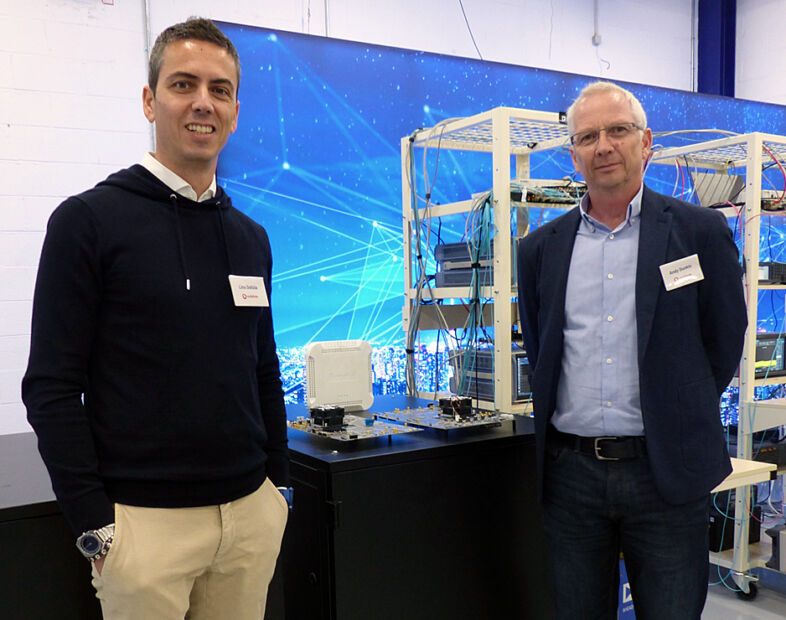Vodafone partners Analog Devices on Open RAN
- October 25, 2023
- Steve Rogerson
- Vodafone Business

Vodafone is one of the first companies to make use of Analog Devices’ Catalyst accelerator design centre in Limerick, Ireland, as it works to develop products for the Open RAN (radio access network) standard that allows interoperability between mobile providers.
The Catalyst design centre was set up in March 2022 to act a space where Analog Devices and its customers could co-create technology.
“We want to develop open platforms,” said Andy Dunkin, senior manager for radio products at Vodafone. “Many of our customers are in an industrial environment and are putting far more demands on our networks.”
He said the reason to move to an open platform was to drive cooperation, innovation and cost effectiveness. “Using an open platform lets us deliver these services,” he said.
Previously, he said, mobile networks were in a black box that were delivered for operators such as Vodafone to run.
“Now, we need more intelligence and we need that at the edge in our base stations,” he said. “We need to push more services out to the edge and reduce the latency. The openness lets companies run on the same platform they use for IT.”
Everything, he said, used to be very closed but now it is an open ecosystem that sees Vodafone sharing information with Analog Devices and other mobile operators. Working directly with Analog Devices lets Vodafone influence what happens at the silicon level.
“This is the silicon that goes into the products we deploy to give the performance we want,” said Dunkin. “We have accelerated innovation to meet our massively complex requirements.”
He said he had seen other operators adopting Open RAN.
“The industry has been moving towards this and now realises that the value is quite clear,” he said. “We have open requirements driving desire for this platform. We want Open RAN deployment of at least 30 per cent by 2030. It is about bringing the latest technology into our networks. Other global operators are all pushing the same message.”
The most important thing, he said, was to bring increased intelligence. Vodafone is giving Analog Devices full visibility into its whole network. It is also showing it traffic profiles so it can see how the traffic works today and how it can be changed.
“Traffic profiles are always changing and we need to track this and respond to demands,” he said.
Vodafone has also opened a silicon R&D centre in Malaysia and is working with Intel. “This is a model we are using with other partners and similar to what we are doing here with Analog Devices,” he said.
Vodafone’s Lino Delizia is working with Analog Devices at the Limerick centre.
“We want to influence the product roadmap,” said Delizia. “We are looking at what type of features we want today and in the future. We need an understanding of how the network operates. The work with Analog Devices lets us be more efficient.”
Delizia is working directly with Analog Devices (www.analog.com) and Vodafone (www.vodafone.com) brings in other people as and when needed to help in the work at the Catalyst.




